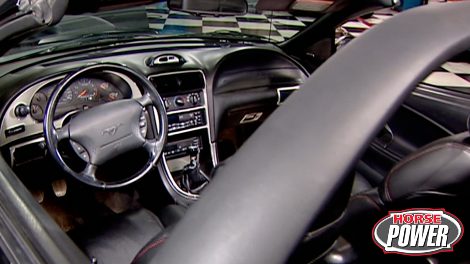
2005 Mustang
We're focused on infusing a 2002 Ford Mustang GT with modern muscle, enhancing its performance new cams, leading to an 11-horsepower gain over the baseline of 229 rear-wheel horsepower.
Season 9
Episode 19
Hosts: Joe Elmore, Chuck Hanson, Mike Galley
First Air Date: June 1, 2015
Duration: 18 minutes 34 seconds




























